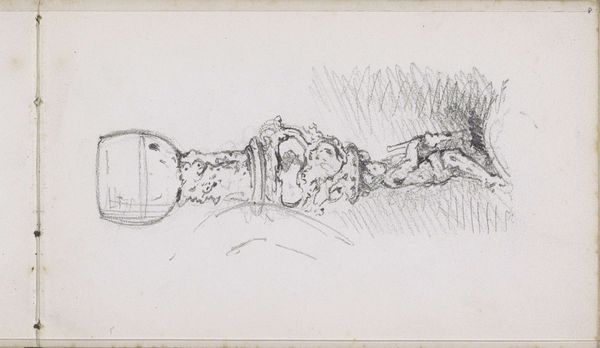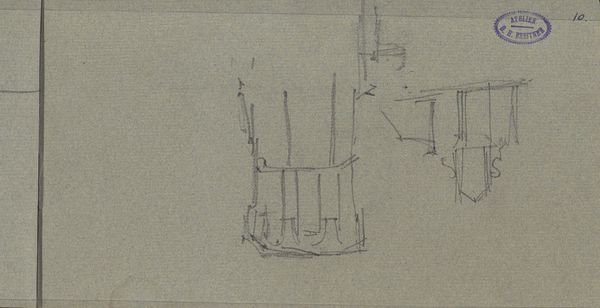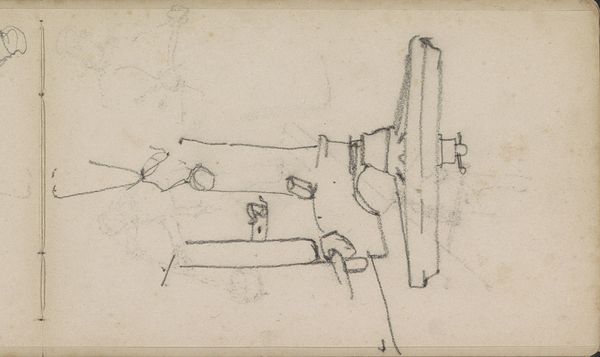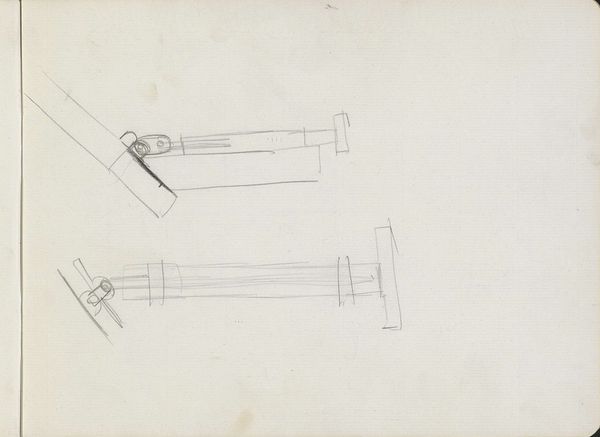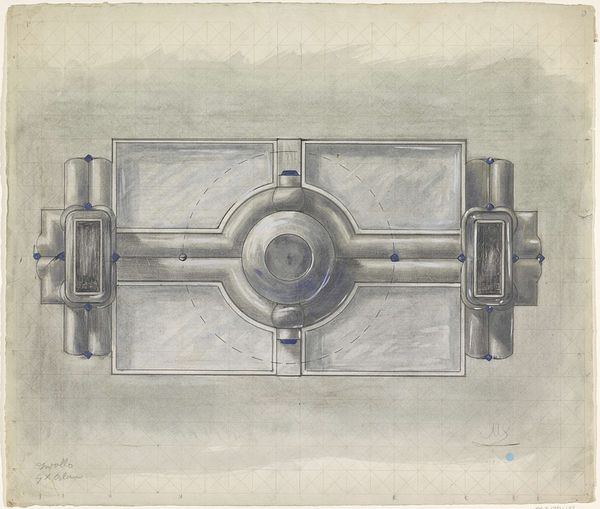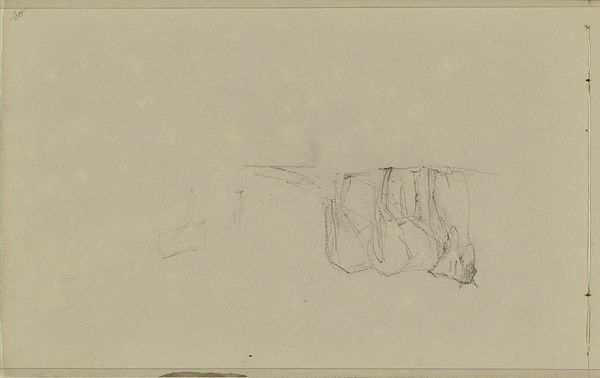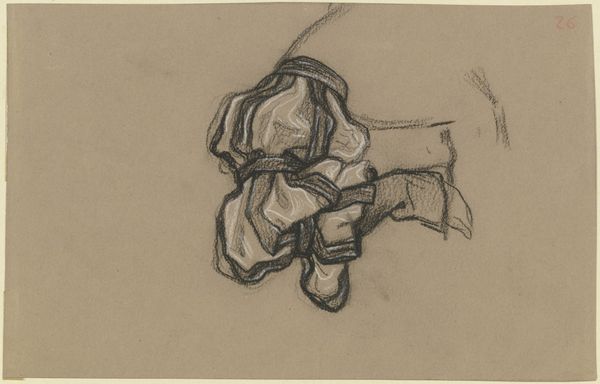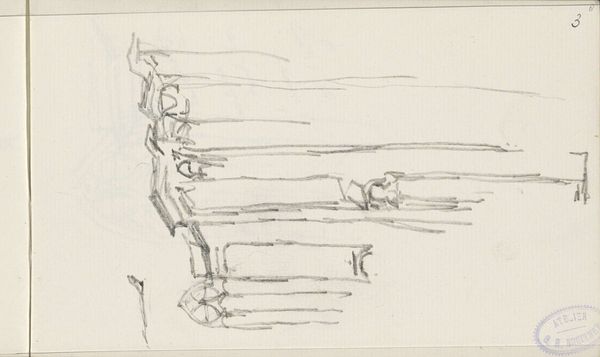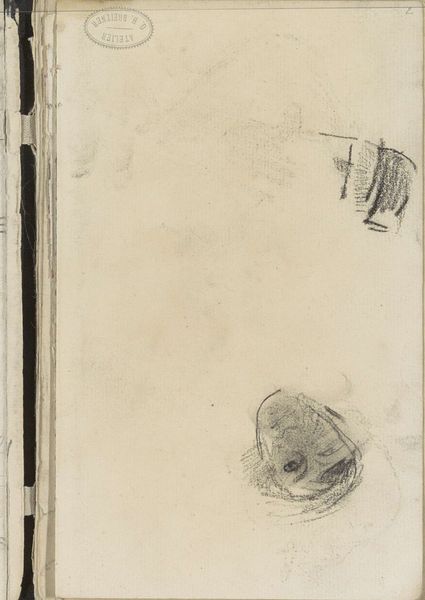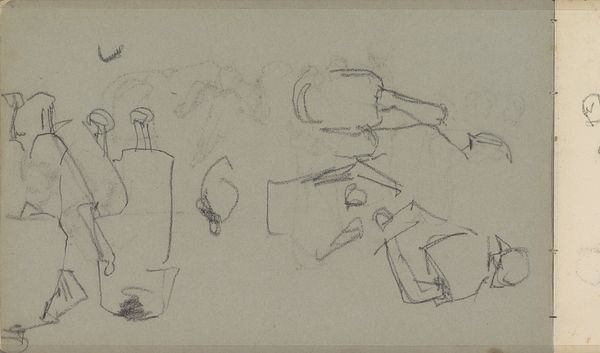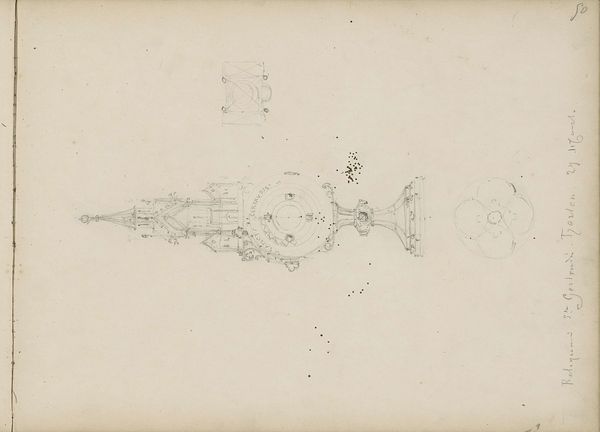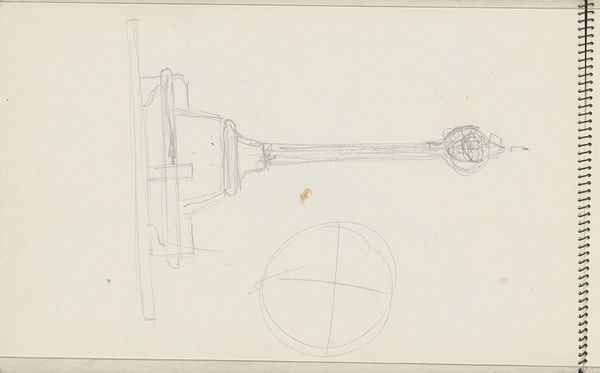
Copyright: Public Domain: Artvee
Editor: Here we have Paul Cézanne's "Kerosene Lamp," a pencil drawing from 1878-1881. I find the sketchiness quite striking. It's not about realism; it feels like an exploration of form. What do you see in this piece? Curator: Its structural framework is fascinating. Note how Cézanne builds the lamp's form with simple, almost geometric shapes. Consider the interplay of the cylinders and cones, defining the volume not through shading but through contour lines. Observe how this focus shapes transcends mere representation, emphasizing the object's underlying architecture. Editor: So you're saying it's more about the structure than the object itself? I thought drawings were meant to be representations of what you see. Curator: The work departs from mimetic depiction. Look closely at the repeated lines, the "pentimenti." Are these errors, or do they signal the artist grappling with the object's form in space? How does the texture of the paper interact with the pencil lines to create depth? It asks us to analyze form as primary. Editor: I see what you mean. The lines aren't perfect, and maybe that's the point. Curator: Exactly. These are not mistakes, but rather critical parts of the method. How do the slight variations in line thickness affect the sense of mass? Editor: I never thought about a simple sketch having so much going on. This changes how I look at drawings completely. Curator: Precisely. Analyzing it with a close focus helps appreciate Cézanne’s project for radical visual change, as it lays bare the foundation of the solid volumes in the paintings.
Comments
No comments
Be the first to comment and join the conversation on the ultimate creative platform.
